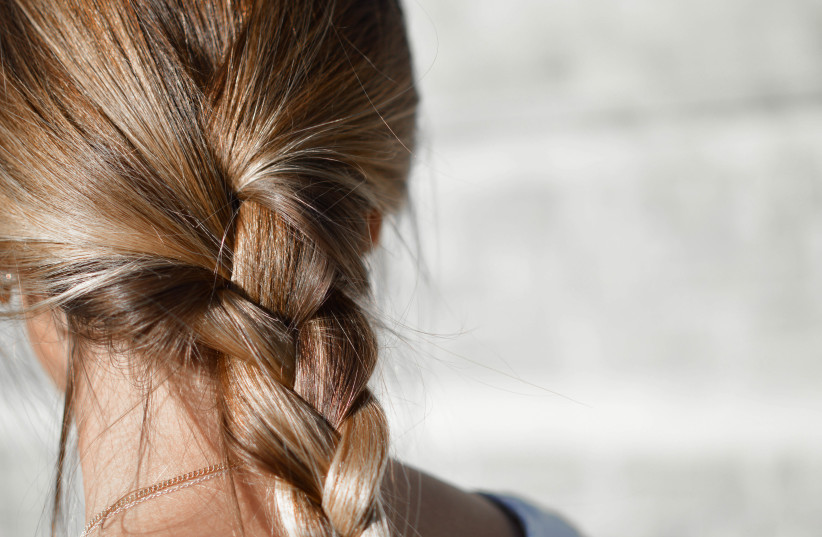Acne is a fairly common phenomenon and it isn't limited to puberty or to one's face. It's time to talk about one particularly common and embarrassing type.
Scalp acne is a type of acne breakout centered on the scalp, nape and forehead. It is considered to be one of the most common of scalp diseases among men and is often caused by an inflammatory process within the hair follicles.
But scalp acne is a much more serious nuisance than pimples located on other parts of the body, and this is due to its location. At the end of the day, people don't really have any option other than to put down their heads, and then it just hurts and itches.
But this is also a chronic issue since scalp acne is caused by unbalanced sebaceous glands.
Why does this happen?
Scalp folliculitis is an inflammatory condition in the hair follicles that often manifests as small, itchy pimples. This can be caused by inflammation due to ingrown hairs or by bacteria, fungi or mites causing an infection.

The resulting inflammation also brings with it chronic itching and redness. When they spread from the scalp, it can be spotted on the front part of the forehead.
There are two types of this inflammation: The first is superficial folliculitis, which is mild and easily treatable. The second is deep folliculitis, which is located deeper in the hair follicles and can be much more difficult to get under control.
And if not treated with antibiotics, scalp acne has the potential to get worse and can manifest as painful pus sores.
From red skin to hair loss
There are several ways that scalp folliculitis can manifest
- Small and itchy lesions: Scalp acne often starts with small and itchy lesions along the front part of the scalp. Scratching it can cause further pain and infections since it can introduce new bacteria into the open skin.
- Red, inflamed and swollen skin: Depending on the size and severity of the infection, this can range from a single pimple to a patch on the scalp.
- Whiteheads along the frontal hairline: This is the clearest indicator of an acne breakout on the scalp, especially alongside other symptoms. Deeper pimples will likely follow.
- Hair loss: This isn't an initial symptom, but it can occur slowly because the hair follicles are sick due to an aggravation of the inflammation. This requires a dermatologist's treatment.
Who is at risk of suffering from scalp acne?
Patients with a weak immune system are more likely to suffer from hair follicle inflammation, as are people who already suffer from acne elsewhere. This is also the case with people who have preexisting skin allergies and those who are frequently treated with steroids.
In order to reduce the risk of developing scalp acne, one should avoid frequent shaving. You should also avoid wearing hats and headbands for extended periods as it can trap sweat in the scalp, which can spark inflammation. Hot tubs are also something to avoid as they're breeding grounds for bacteria.
What kind of treatment is there?
There are some home remedies that can help alleviate symptoms and prevent inflammation, but really, only a dermatologist is qualified at identifying the problem and figure out the best way to treat it.
- Use anti-dandruff shampoo: Anti-dandruff shampoos often contain antifungal ingredients. That means it can be useful in removing fungal lesions, excessive oils on the scalp and other bacteria around the hair follicles. This reduces the chances of inflammation and infection. You can also ask for other natural antifungals, like essential oils and natural antiseptics.
- Avoid hot water: Hot water can worsen itching and dry out the skin. Inflammatng the hair follicles on the scalp causes skin irritation already. In other words, one should use lukewarm water when showering. But this only applies in the shower – hot compresses can soothe the scalp and make draining pimples easier.
- Over-the-counter itching relief: Itching caused by scalp folliculitis can be irritating and increase the need to scratch intensely. But that's bad because it will only aggravate it more. But over-the-counter itching relief like antihistamines can help, as can aloe vera.
- Antibiotics: This is a treatment option only available with a doctor's prescription and supervision. This will also serve to help suppress any inflammation.
When should you see a doctor?
Calp folliculitis can come on gradually and it may not seem serious at first. However, going to see a dermatologist is still very important, especially if the symptoms persist.
It is very important to make sure you get a proper and correct diagnosis because the untrained eye might misidentify it as psoriasis as opposed to an equally serious scalp folliculitis.
